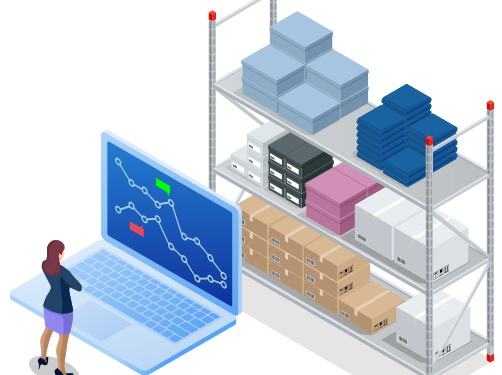Scaling your business to enter new territories is always scary. You never know what is going to happen and how the market would react to your presence. But before going global, you need to know your own territory first. We are talking about scaling your business across the country.
Depending on where you live, your country’s market could be a huge one in itself. Making your mark on the national scene is no small deal. That’s what you should aim for, even if your ambitions are to go global.
What role does inventory management have to play in a national expansion?
Every product-based business is out there selling something to its customers. Inventory management refers to the art and science of managing inventory in a way that doesn’t cost you too much while optimizing availability. Every business has an inventory, but how you manage it makes a world of difference.
Hands-on inventory management is a term coined by Ed C. Mercado, who talked about managing inventories in his book titled Hands-On Inventory Management. Mercado primarily talked about a way of managing inventory that satisfies all customers but is also cost-efficient. If you want to take your business across the country, starting with hands-on inventory management is a must.
Controlling inventory costs
By definition, controlling inventory costs is the first step toward hands-on inventory management. Your goal is to reduce the amount of money you have to spend every month, quarter, or year on inventory expenses. But that’s not all. You have to simultaneously ensure that your customer’s experience is not hindered.
There are many things you can do to control inventory costs, and it involves following a strategy designed for it. Let’s begin with Minimum Order Quantity (MOQ) and how to use it to your advantage.
Minimum Order Quantity (MOQ)
MOQ is the minimum number of units you have to order from your wholesaler. While MOQ is important for the wholesalers to make profits, it’s not very useful for small businesses. Learning how to align your demand with the MOQ is important to manage the inventory efficiently.
Negotiating MOQs with various suppliers is the next thing to do. If you are operating in a niche where some suppliers have a monopoly, consider building long-term business relationships with them. Otherwise, expand your suppliers’ network and rigorously negotiate for the best deal.
Dealing with dead stock
Dead stock is a persistent problem for most product-based businesses. But getting rid of dead stock is both essential and necessary to scale a business. There are several ways to approach the dead stock question.
The most obvious answer in terms of finances is to return it to the supplier. The problem is that many suppliers do not accept returns after a period. Others would charge you a penalty for returned items, and some give returns only in store credits. If returning is not an option, here’s how you can repurpose dead stock.
Giving away dead stock as freebies and giveaways is a great way to improve customer engagement. Alternatively, you can donate the dead stock and get a tax remittance against it. You can also consider selling the dead stock at a low price. No matter what you do, it’s important that you get rid of dead stock and not let it become an obstacle to getting new stock.
Use an inventory management software
Most small businesses do not use inventory management software. However, using one can change the way you deal with your inventory. The benefits of an inventory management tool are self-explanatory. It helps you manage your entire inventory from a unified interface and provides advanced inventory tracking options.
Miscalculations are one of the biggest issues that contribute to the difficulty of accurately managing the inventory. With inventory management software, you can be assured of accurate calculations since there’s no chance of human-driven errors. Using a tool designed to help you manage your inventory is the best investment for hands-on inventory management. A cloud-based inventory management software also ensures that your data is safe and accessible at all times.
Analyze buying patterns
While inventory management software helps with analyzing buying patterns, you should also add your insights to it. For instance, the buying pattern of consumers has turned significantly towards e-commerce in the wake of the Covid-19 pandemic. The sellers who were early to identify this change profited even in the middle of the pandemic.
When you have an informed prediction of where sales will be in the coming months, managing inventory accordingly is simple. However, you cannot be accurate with predictions at all times, not even with advanced analytical tools. That’s why it’s important to keep a leeway in case your predictions are wrong.
Conclusion
Taking your business across the country is much more feasible with hands-on inventory management. We hope this guide helps you adopt some of its principles.











